New Documentaries Exploring the Body and Soul of the Giant Monster
By any account, Godzilla is Japan’s most beloved movie monster – and not only Japan’s. We look at two Godzilla documentaries Bringing Godzilla Down to Size and Monsterland.
The giant rubber reptile has legions of fans in the USA, Europe, and wherever else you look. Godzilla is strong, Godzilla is cute and Godzilla has spectacularly trampled downtown Tokyo to bits in 28 movies so far, starting with the first Godzilla film in 1954.
It’s common knowledge that there has always been a man inside the Godzilla suit and that the Tokyo to be destroyed is a scale model. But there is more to Godzilla than that, much more.
Two recently released documentaries finally explore the fascinating inner workings of Godzilla, how he came to life and what he is all about. The two films have totally different approaches but wonderfully complement each other. In a way, one of them talks about the body, the other about the soul. Ideally, they should be seen together.
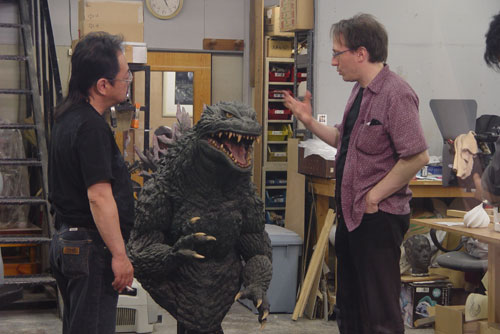
Bringing Godzilla Down to Size
This is the one about the body and it tells the story of Godzilla purely by tracing the history and details of the film series’ special effects, with a special focus on the original creator of Godzilla, Tsuburaya Eiji. Directed by Norman England, a Californian living in Tokyo, the documentary starts out with the early history of Tsuburaya and he turns out to be a really interesting man.
Born in 1901, he joined a film studio early on. He found his calling during World War II when Japan’s film industry was working full force on the propaganda front. The movies called for pictures featuring the epic battles but real footage was scarce and planes and other large weaponry were not available for film shootings.
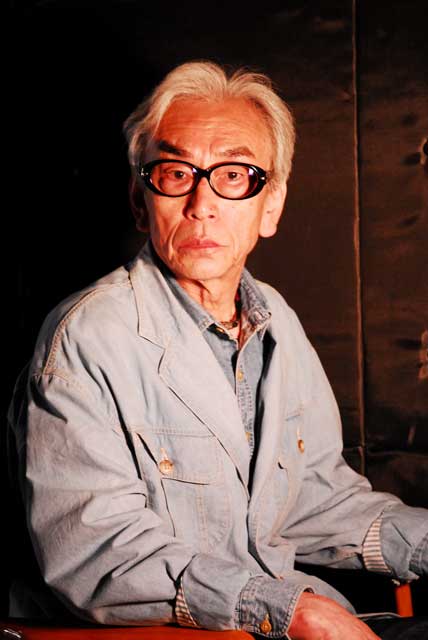
Scale Models
Tsuburaya pioneered the use of scale models and developed them into great special effect tools. His toy plane re-enactment of the Pearl Harbor attack looked so convincing that reportedly even Douglas McArthur was fooled when he saw the film years later, believing the scenes to be actual footage from the infamous airstrike.
Tsuburaya returned to the big screen in 1954 as special effects director of the first Godzilla movie. He made Godzilla the monster we have known ever since and he continuously worked on the movie series till his death in 1970.
As Godzilla special effects director, Tsuburaya was never one of the people in the limelight. But he found fame eventually. Most Japanese today remember him for his very own famous enterprise – for creating, directing and producing the first Ultraman movie in 1967, thus starting another long-running monster franchise.
Since this documentary was co-produced by Toho, the studio producing the Godzilla series, plenty of Godzilla movie footage illustrates the points made. Toho has often been described as a company difficult to work with for independent filmmakers but this was certainly not an issue here.
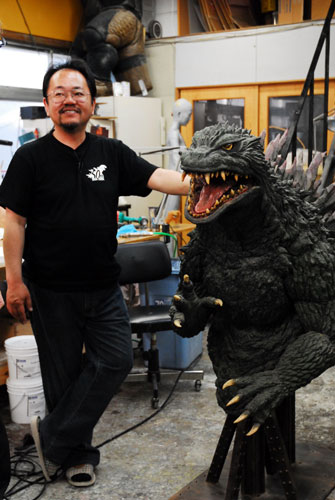
Special Effects
A large range of other special effects experts are interviewed for the documentary, all of them have great stories to tell and are very willing to demonstrate how some truly astonishing effects have been created in an almost home-made way. Viewers get to see the demonstration of how they made the sky-high ash clouds of a volcanic eruption in the studio – it’s low-tech genius.
The highlight of the film however is the first-ever meeting of all three men who ever acted inside the Godzilla suit. Nakajima Haruo played Godzilla in the first 12 movies of the series, then Satsuma Kenpachiro took over the role in the 80s and 90s and Kitagawa Tsutomu acted in the most recent installments. In the most memorable and most hilarious scene of the documentary, the three of them walk down a street, towards the camera and each of them is enacting the way they made Godzilla walk, without the costume of course.
Nakajima does it the powerful way, Satsuma the aggressive, Kitagawa the playful. All of them have hair-raising stories to tell. Mostly involving the large pool that Tsuburaya had built to portray the ocean Godzilla was to rise from. Slipping in costume in the water would have been fatal, all of them report. The heavy suit was difficult to act in even under the best of circumstances, under water it would have been a deathtrap.
If you are a Godzilla fan of any sort, this documentary is a definite must-see. If you don’t care much for Godzilla as such but love the weird stories lurking right behind even the most popular faces of mainstream culture, you find a treasure trove here just as well.

Monsterland
German director Jorg Buttgereit is best-known for his death-centered transgressions such as Nekromantik (1987), an unsettling necrophiliac love story, and King of Death (1989), an artful filmic exploration of a number of loosely related suicides.
That the West Berlin native has also had a life-long fascination with Japanese monster movies has never been much of a secret, though. He spent his youth watching monster flicks in the local theater and already as a teenager shot some stop-motion animated and Godzilla-inspired Super 8 shorts. He later wrote a detailed book called Japan – Die Monsterinsel, featuring texts on every Japanese monster flick ever produced. It was published in German in 2006 and is still awaiting an English-language release.
With Monsterland however, Buttgereit ventures out to discover the nature of the beast itself – the monster as such. ‘What are monsters? Where do they come from? Why do we need them?’ he asks and turns to the most competent monster movie experts looking for an answer.
Joe Coleman
The first one to show up on screen and attempting an answer is Joe Coleman, painter, serial-killer specialist, and former underground filmmaker from New York. “Look into the mirror and you will see the monster right there,” he says dramatically.
But it’s not that easy. Monsters can be many things and Buttgereit explores a great variety. Swiss artist HR Giger explains the beauty of the alien creatures he had designed and built for Alien (1979), Tsukamoto Shinya talks about personal nightmares inspiring him to make Tetsuo (1989), his groundbreaking cyberpunk feature on a man turning into a crazy metal monster, Godzilla actor Satsuma Kenpachiro (also featured in Bringing Godzilla Down to Size ) talks about how to bring a monster to life while acting in a suffocating rubber suit. Honda Ishiro, the director of the first Godzilla movie, relays how the nuclear bombings of Hiroshima and Nagasaki inspired the creation of Godzilla.
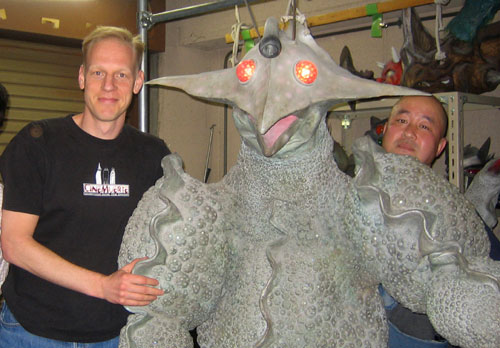
Beyond Rubber Masks
The documentary then branches out beyond the rubber mask monsters. “What about those really spine-chilling monsters of the 1980s?” it asks, what about figures like the pathological serial murderers much in vogue then and featured in movies like Henry – Portrait of a Serial Killer (1986)?
Killers with a face and acting in the most mundane surroundings – which makes them all the more scary. Monsters like that could not only sit in the theater right next to you, they might even follow you home and do unspeakable things to you.
It’s a tall order Buttgereit takes on in the film. Going from the entertaining rubber beast to the shadow-with-a-knife you read in the morning paper about, packing it all in one film. But he succeeds – especially thanks to the enlightening thoughts of discussion partner and veteran horror director John Carpenter – famous for the Halloween series and cult classic Escape from New York (1981). But he is not the only one proving here with philosophical insights how a deep understanding of human nature and genuine human fears are central to all successful horror/monster movie-making.
Illustrated with lots of movie scenes and featuring quite some dark humor, Monsterland is a pleasure to watch – a pleasure that will get you thinking, though.
Godzilla Documentaries – How to see the films
Bringing Godzilla Down to Size is a special feature on the DVD release of the 1956 monster classic Rodan/War of the Gargantuas directed by Honda Ishiro, the same man who also directed the first Godzilla.
Monsterland was produced for German / French TV channel ARTE and aired in Europe repeatedly in 2009. There is so far no DVD release in the works.
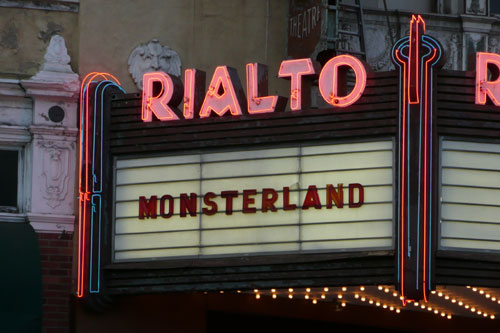
by Johannes Schonherr